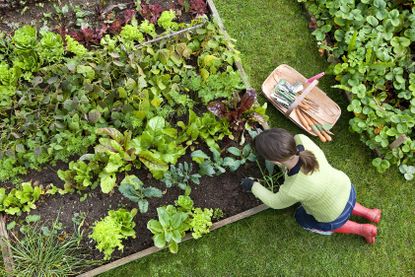
If you're wanting to start a garden in your yard, we salute you. Spring is the best time of year to tap into nature and seek out the best gardening tips for beginners. Whether you're looking to make the most of your outdoor space with a vegetable plot or want to grow your favorite flora, honestly, it's doable – green thumb or not.
There are a few hard and fast rules to respect when turning your favorite garden ideas into a reality – think climate, hardiness zones and a plant's need for water – respect these, and you're golden.
Kate Turner, Gardening Guru at Miracle-Gro says, 'With lots of time at home and longer, brighter days ahead, now is the time to make the most of your garden or green space. Whether you have a big back lawn, a few planters on your drive or space for a window box, there are many green-fingered activities than can keep you busy.'
How to start a garden for beginners
Lindsey Hyland, a gardening expert and founder of Urban Organic Yield says 'Creating a garden in your backyard can be a fun and rewarding experience'
Like with most home and garden jobs, planning is key to success. It can be so easy to get over-excited about all the growing potential in your backyard but you've also got to know when to rein it in. 'Think about what you want. Are you looking to grow flowers, vegetables, herbs or a bit of everything? Will you be growing in containers or in a big border? Whatever sort of green space you want it’s always worth having a plan. Not only will this save you time but it will also save you money when you go to the garden center.' Recommends Turner.
Jeremy Yamaguchi, CEO of Lawn Love says 'The first thing you want to do is research what kinds of vegetables grow best in your area. It can be tempting to choose all of your favorite vegetables, but unfortunately the climate where you live might not be the ideal living environment for some of them. So, to have a successful garden, look up what grows best in your climate.' Whether you're starting a small vegetable plot in the ground or building out a full-blown kitchen garden.
From identifying the best growing positions and garden plants for your space to maintenance and more, however small or large your yard, you'll be able to enjoy stunning (and potentially delicious) results in no time.
1. Assess your climate
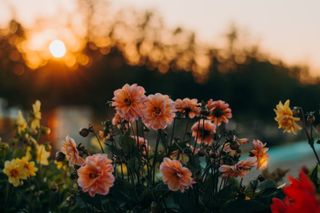
To start a garden successfully, you need to understand your yard's climate and the growing conditions that you're going to be working with, first and foremost.
Kate Russell, Author of Stop Wasting Your Yard! and of The Daily Garden gardening blog recommends identifying your USDA Hardiness Zone and figuring out your yard's sun exposure to know what will thrive.
Turner adds 'Look at your space. Do you get a lot of sunshine or is your area in the shade most of the day? Use the compass on your phone to find out which way your green space faces. If it’s mainly North then it won’t be the best environment for veggies or a Mediterranean-type garden. If you love ferns and hostas then a shady spot is ideal.'
Always be aware of how much sun your garden or individual borders get and go to your local nursery with this in mind. When you buy plants, check the labels: some love sun and some shadier spots. If there’s no information, as a rule of thumb, bear in mind that the vast majority of flowering plants, as well as fruit and vegetables, need to be positioned in full sun, although some will tolerate semi-shade.
This doesn’t mean you won’t be able to grow any flowers if your garden isn’t south-facing: plenty of sun for half the day in an east- or west-facing gardens is perfectly fine, too. If you have a north-facing garden , find the best shade loving plants, which will be happy in your plot.
Russell adds 'Select plants based on what you will enjoy eating and what will grow in your microclimate.'
Wind direction is another factor to consider when starting a garden, 'Access where north is in the garden. If you have a wide-open space, you may consider planting evergreens to help block northern winds. Northern winds can desiccate plants or retard growth during the winter months. Keep in mind that western winds blow in summer storms.' Says Lively Root's Horticultural Expert, Miss Debbie Neese.
2. Understand and improve your soil
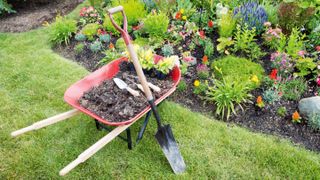
Assessing the existing soil conditions is a must when starting a garden in your yard.
'Take a soil sample to your local extension agent to see if there are any nutrients you lack and need to add to your soil.' Says Neese. 'Is the soil dry and dusty? Does it need soil amendments? Is it always moist and not well-draining? Or is it soggy? These conditions will play a part in what types of plants you can use in these conditions.'
Most plants will prefer moderately fertile, well-drained soil. This means a soil that is rich in nutrients but not imbalanced. The structure of the soil should also be open enough to let the water penetrate and then drain freely. The best thing to do in most gardens is to purchase a top soil mix, which will give your plants the best possible start.
However, if your garden has particularly chalky or clay soil and plants aren’t thriving, you should start by improving the soil as much as possible before you plant anything else. Ask your local garden center for the best soil preparations and composts for your area’s soil type.
Russell says to make life easier, 'Get your soil tested by a reputable lab. (It's cheaper than you think!)'
3. Plan borders wisely
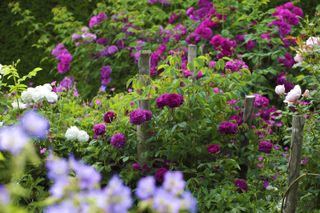
One very exciting task is thinking about what to plant within your garden borders. Planning a garden border can feel like a daunting task when you’re a beginner gardener, but it’s much simpler than it looks. If you want neat garden borders, always plant taller plants at the back and low-growing ones at the front (the plant label will tell you the height and spread of each plant so you’ll know how far apart to plant them, too).
Planning a border next to a garden path? Don’t just think height and color, choose plants for scent, too: herbaceous perennials, such as lavender, will greet you with not just color, but a relaxing aroma.
By far the easiest planting scheme is a natural one. Just choose a seed mix – for example, one of our best wildflower mixes – sprinkle liberally over your chosen area, water well, and watch the plants grow.
4. Water plants – the right way
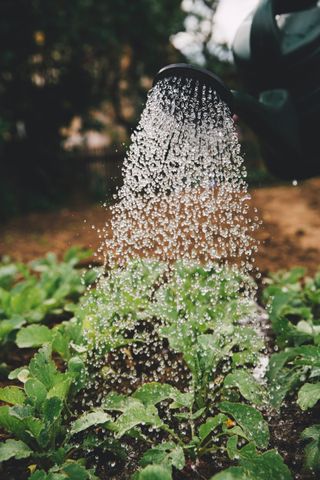
There is nothing more important than watering your plants regularly and correctly. Your plants’ labels will tell you how much water they like (it’s worth keeping a list, even just one that’s in your head). Even if you don’t mulch or fertilize, always water plants appropriately and at regular intervals. Flooding your plants with too much water occasionally will stress them and allow disease to set in. Watering around the roots of your plants, avoiding leaves and stems, is also important. The best time to water your plants? Early in the morning or late in the evening. You’ll need to be especially vigilant during extreme weather such as a heatwave.
5. Pick plants that are easy for beginners
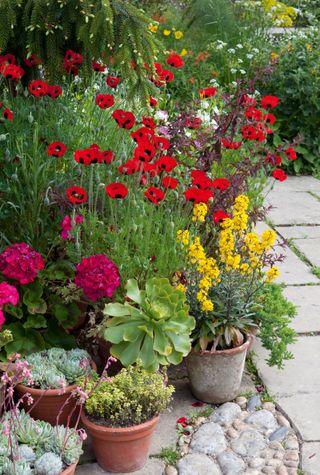
Best easy-to-grow plants for beginners
Nasturtium
Calendula
Poppies
Sweet peas
Sunflowers
Cherry tomatoes
Pansies
Geraniums
Radishes
Lavender
Planting decent-sized shrubs is generally trouble-free if you follow the directions on the label. Also, picking plants that are native to your area (ask at the garden center if you’re not sure) will make life easier. Tropical plants look stylish and contemporary but won’t grow happily in cooler climes. Otherwise, choose low-maintenance plants that can (pretty much) look after themselves.
Looking for flowering plants? Provided your garden gets plenty of sun, even a complete beginner will find sunflowers, poppies, Nigella, and pansies easy to grow.
Our tip: if you want to grow flowering plants from seed, most will need to be sown after all risk of ground frost has passed (usually after mid-April). This will mean that you get later flowers. If you want the flowers earlier in the summer, you’ll need to raise seedlings in containers indoors, planting them out from May onwards.
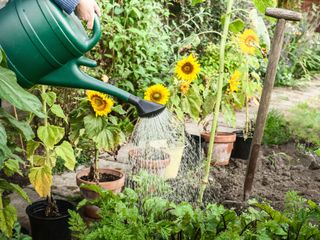
7. Don't be afraid to grow your own veggies
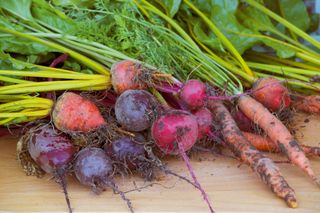
Gardening for beginners can include starting a vegetable garden from scratch. Sounds daunting? The truth is that some vegetables are so easy for a complete beginner to grow.
Radishes are a doddle – you just sow them directly where they are to grow (after the frosts have passed) and harvest them a month later. Peas are also an easy crop, requiring support (bamboo canes will do), and produce more pods the more you pick them.
Tomatoes are also very easy, and make great container plants. Just feed them regularly (every week) with tomato feed.
Avoid cabbage, broccoli and eggplant if you are a beginner – they’re tricky to grow and prone to pests.
8. Grow herbs from seed
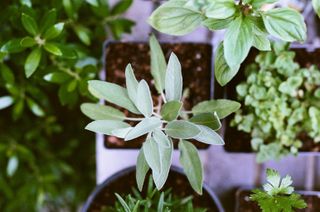
Growing garden herbs is easy – and many herbs, such as sage and rosemary, make beautiful border plants, too, so you’ll be combining a veggie garden and a decorative garden. The best way to grow more delicate herbs, such as oregano, parsley and mint, is in containers, whether outdoors or in. Want to grow herbs from seed? Patience is key: parsley, sage, and thyme can all take two to three weeks to germinate, so don’t panic if you don’t see any seedlings straight away.
9. Choose containers for a simple life
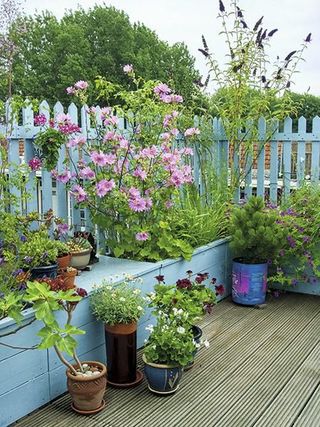
Container gardening is a great way to start growing plants on a small patio – or to grow non-hardy plant species that you’ll then be able to overwinter in a conservatory or bright indoor spot. One of the easiest container plants is the pelargonium – producing lots of flowers throughout the summer, these plants are unfussy and just need sun. You will need to water your containers more often than bedding plants, though, because soil dries out quicker in pots.
Don’t forget that plants need drainage. If you must plant in a pot without a drainage hole, line the bottom with gravel to prevent water-logging in the soil.
10. Start small, small garden or not
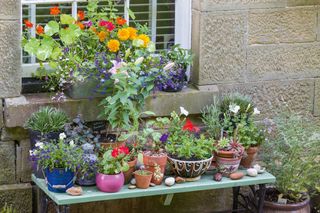
Just because you have a small yard, it doesn’t mean you can’t start gardening. Start with site selection. 'How much space do you want to dedicate to a foodscape, keeping things like accessibility and distance to water in mind?' Says Russell. And, remember to use every inch of outdoor space you have.
Plant out window boxes with everything from fruit and veg to perennials and annuals, to create both relaxed and formal displays. And, of course, they’re not just limited to small gardens – large plots will benefit from the added color and change in level they bring.
11. Choose easy flowers, like roses
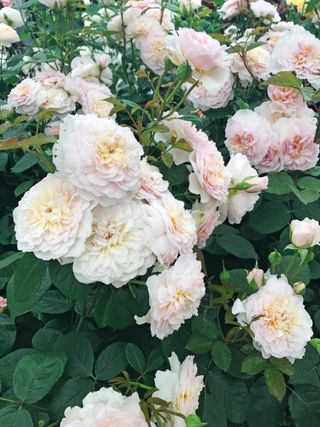
Growing roses is many a gardener’s dream, but is it a good choice for gardening for beginners? Our advice is not to be put off by roses because of their reputation for being capricious. In reality, roses can be easy enough for a beginner to grow. We advise choosing a David Austin variety, as they are healthier and more resistant to disease than many other types. If you are a gardening beginner, buy a potted rose in spring and plant in your garden. Fertilize twice during summer.
When it comes to pruning roses, opinions differ, but some gardeners don’t prune at all and still have healthy rose plants that flower every year. That’s great news if you’re not entirely comfortable with a pair of secateurs.
12. Be realistic with your time for gardening
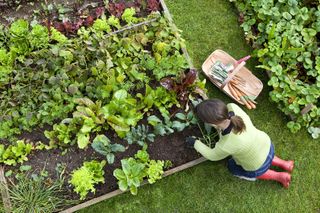
When starting a garden, it’s really important to work out how much time you’ll have for gardening. If the answer is ‘an hour a week’ and you have a smallish plot, that may just be enough time to keep it neat, fed and watered.
However, if the answer is ‘rarely’, you’d be better off with low-maintenance garden plants like grasses and veggies that you can leave to do their own thing, think over-wintering garlic, bulb flowers like tulips and the like – depending on your climate of course.
Look for drought-tolerant plants that won’t mind being ignored during hot spells, and if you won’t have time to mow the grass, consider choosing alternatives to laying lawns.
13. Familiarize yourself with toxic plants to pets
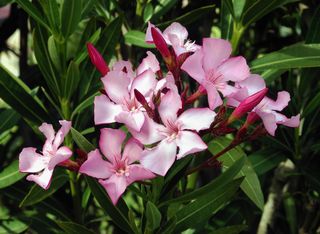
If you have a dog or a cat, there are some plants you should avoid planting in your garden. While the list of plants that can make your pet sick if ingested is long, these common garden plants are particularly hazardous to both dogs and cats:
- Azaleas and rhododendron: the whole plant is highly toxic to both dogs and cats
- Spring bulbs: the bulbs are the most poisonous part, and are particularly dangerous for dogs who like digging in the garden
- Lillies: deadly to cats and should be avoided completely
- Oleander: highly toxic to all animals
14. Remember, research is everything
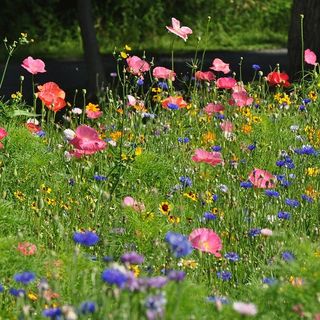
The best gardening books are invaluable for beginner gardeners. We rely on: RHS How to Garden When You’re New to Gardening and How to Grow Practically Everything by Lia Leendertz and Zia Alloway. Both contain simple step-by-step guides with images for every kind of gardening task, from weeding to fighting plant disease, and every kind of plant, from vegetables to flowers. Both are suitable for someone who has never done any gardening before. Stop Wasting your Yard! by Kate Russel is available on Amazon too and is a must-read for every modern gardener also.
15. Choose a simple garden design
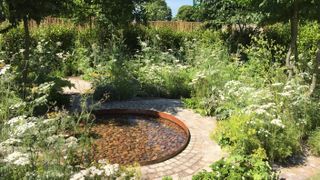
Garden design can seem like an arcane art only landscape architects and garden designers understand. But, in truth, a beginner gardener has several simple design layouts to try out that don’t require much expertise:
- The classic garden with perimeter borders: this is a garden with a lawn or patio at the center, and borders surrounding this central space. Best for small gardens.
- The defined garden: if you have a large space to work with, try dividing it into three to four different areas. For example, one area can be dedicated just to veggies, another used for ornamental flowers, and a third for wild planting.
- The container garden: if you only have a small patio or deck, then pots are the way to go. Choose containers of different shapes and heights, and add another dimension with a ladder shelf.
16. Pick up the best garden tools for beginners
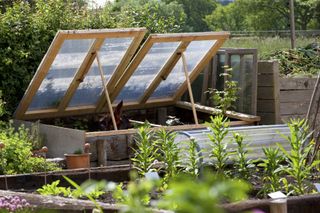
As a bare minimum, you will need a spade and a trowel, both necessary for creating garden borders and planting. If you have hedges/topiary, you will need a pair of shears, and if you are planning on growing roses or any other kind of bush that’ll need pruning, you’ll need secateurs. Even if you're just a seasoned gardener, investing best gardening tools is an investment you won't regret in a hurry!
17. Remember garden maintenance

'How much maintenance are you willing to do per week? Some plants are higher maintenance than others and need a bit more care. For instance, perennials will need to be divided every 2-3 years to keep them healthy. Do you mind spending time raking leaves or pruning during the winter months? Will you spend time weeding and fertilizing?
These are all things to consider when establishing the size of your garden and what plants you choose.' Says Neese.
If you only have time to do two things for your garden (apart from watering), learn how to mulch and weed regularly. Weeding and mulching will ensure your plants have the best chance to thrive by making the most of the water and nutrients in the soil. The only weed we recommend keeping is the dandelion: it’s pretty harmless in your garden and is important to pollinators.
Mulching is easier than you think: all you need to do is cover the root area of your plant with wood chips or leaves. The root is the most vulnerable part of your plant and needs protecting from overdrying and pests. Mulching is usually done in spring, to prepare plants for hot weather, and in autumn to prepare them for frosts. For a complete guide to garden maintenance be sure to read our feature.
18. Dabble in organic gardening
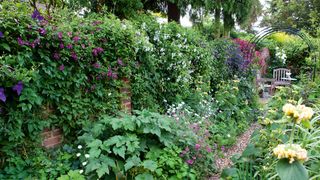
If you are a complete beginner and want to start organic gardening and create your own organic vegetable patch, there are a few ways to make the process easier. First, don’t try to grow from seed if you’ve never done it before: buy plug plants from a local farmers’ market/garden center instead. There’s also a specialist provider called Organic Plants, which will ship you certified organic plants on a monthly basis.
Next, water regularly and maintain good soil quality. The best way to do so is by feeding veggies regularly with fertilizer – of course, the fertilizer will need to be organic, too. 'Spraying chemicals is out, integrated pest management is in. And nothing tastes quite so delicious as a sun-warmed, thoroughly ripened tomato.' Adds Russel.
19. Consider the no-dig method
Double digging is hard work and also a controversial gardening task. But choosing the lazier route is a good choice for beginner gardeners and it will pay off also. 'Gardening has changed significantly in recent years. Rototilling is out, no-dig gardening is in. [It helps protect important soil microorganisms.] ' Says Russel. So let the earth do its thing.
20. Remember that gardening isn't reserved just for spring
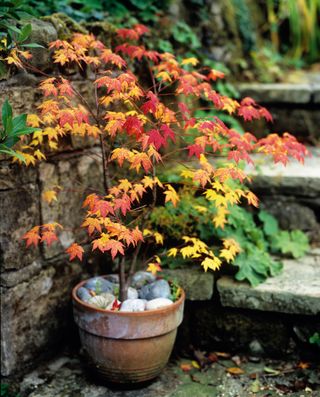
An easy mistake to make is thinking that you'll be done with the garden come September. In fact, gardens and gardening have much to offer throughout the fall months, and it's a crucial time to ensure that your garden is well prepared for winter.
If you want to see some beautiful color in your garden, see our guide to autumn garden plants. Many of these will be mature trees, but some flowers and grasses also keep going well into the autumn.
Maintenance-wise, as the weather gets wetter, you'll want to protect your plants from waterlogging and root rot. In practice, this means mulching borders and placing pots onto bricks to improve drainage.
21. Always prune and you'll be rewarded
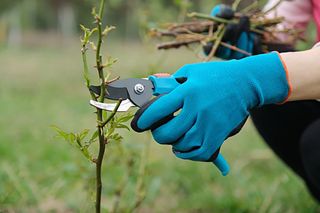
Pruning is essential to the health of many, if not all, perennial plants. It can be a confusing process for a beginner because different plants need pruning at different times of year, but the basic rules to follow are:
- Prune herbaceous perennials such as lavender and rosemary after they've finished flowering, sometime in late summer or early fall. Thyme should be pruned after the first frost.
- Prune roses, hydrangeas, and other flowering shrubs, in early spring, after the frosts have passed, and when you can clearly see new growth.
- If you're not sure about pruning, pick no-prune plants such as Japanese acers: they don't need you to do anything other than water them.
What month should you start a garden?
Spring is a good time to start a garden as you're heading in to the growing season. If you've planted out bulbs over winter, these will have started coming through and you'll be able to go in with most vegetable seeds from as early as mid-March also. Check the packets on what you'd like to try growing from scratch and if you've missed the boat, don't give yourself a hard time and buy sprouted seedlings. The success rate of growing from seed is not huge so not always a great choice for beginner gardeners.
What should I grow in my first vegetable garden?
Turner recommends trying the following for easy crop:
Potatoes
Easy to grow and highly productive. Potatoes are categorized into three groups: first-earlies, second-earlies and maincrop. First earlies are your new-potatoes, great for beginners as they are less prone to disease and pest attack and are ready to harvest earlier. Great varieties to try include Swift, Rocket and Arran pilot. Plant them in a bed, a large container or even an old compost bag with holes put in the bottom and then enjoy looking for your golden treasure in June/July.'
Salad leaves
Salad leaves can be grown on a windowsill if you're running out of yard space, most of the year as long as there is a bit of warmth and light. Grow them in a seed tray or re-use fruit and veg containers to sow them in. Try the Cut and Come again varieties where you can keep picking and growing fresh leaves. The spicy varieties add wonder dimension to your salads.
Sugarsnaps
Every garden should have room for some type of pea in them. Sugar snaps are a perfect vegetable to grow for beginners as they take up a small amount of space, are really easy to grow, and most kids absolutely love eating them fresh from the pod. Plant them out in early summer and provide some support for them to climb up.'
A gorgeous garden is totally possible 🙌
Join our newsletter
Get small space home decor ideas, celeb inspiration, DIY tips and more, straight to your inbox!
Anna is a professional writer with many years of experience. She has a passion for contemporary home decor and gardening. She covers a range of topics, from practical advice to interior and garden design.